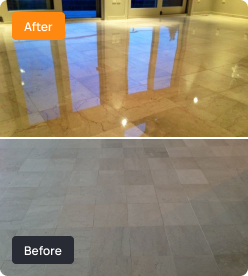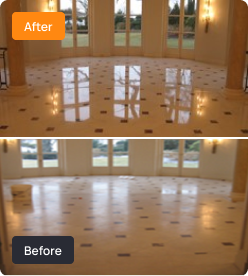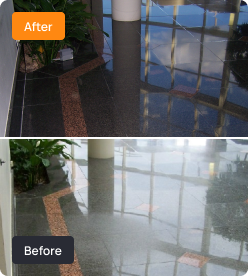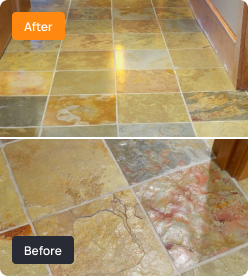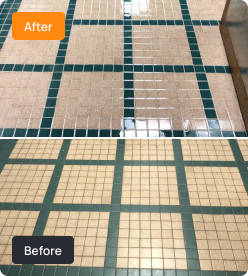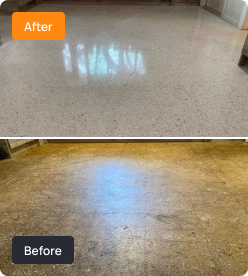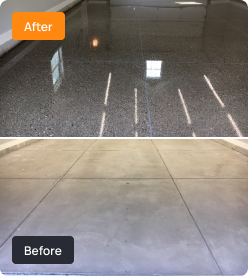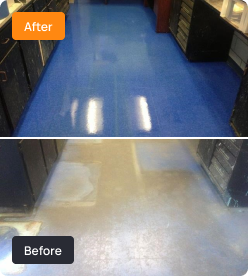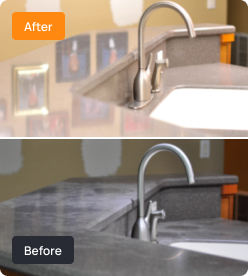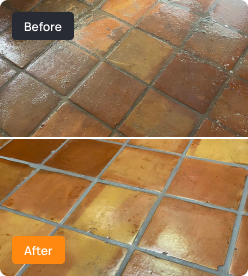Polished Concrete vs. Stained Concrete: Which Concrete Floor Finish is Best for Your Home?
Polished concrete or stained concrete? Which is better for your home? The age-old battle between two most promising and in-demand concrete polishing types confuse many US homeowners when they are planning to renovate their homes’ interiors or exteriors. These distinct finishes bring with them a unique set of aesthetic values and benefits. […]


Polished concrete or stained concrete? Which is better for your home?
The age-old battle between two most promising and in-demand concrete polishing types confuse many US homeowners when they are planning to renovate their homes’ interiors or exteriors.
These distinct finishes bring with them a unique set of aesthetic values and benefits.
Nevertheless, to maximize their potential, understanding their contrasting characteristics becomes crucial.
Read on to know which one is better for your home and how to make that choice.
Why Deciding Between Polished Concrete and Stained Concrete is Tough?
Although polished and stained concrete are prized for their resilience and adaptability, they diverge markedly in their appearance and maintenance needs.
They can be layered together to produce an elegantly hued polished floor. Polished concrete no longer epitomizes monotone gray; it extends its prowess to counters and floors. T
he process entails multi-staged surface grinding with increasingly finer diamond abrasives, yielding a lustrous, mirror-like finish.
Conversely, stained concrete employs acid- or water-based stains that infiltrate the surface to reveal a spectrum of colors and patterns.
Choosing between these two can pose a hurdle as they each have pros and cons based on their implementation.

From Freshly poured rough concrete to polished-like mirror concrete.
Courtesy: MARBLELIFE ENDURACRETE Atlanta
Exploring Polished Concrete
As a flooring choice, polished concrete employs mechanical treatment of a concrete surface to forge a reflective, smooth, and shiny finish.
This process harnesses specialized tools and diamond abrasives for grinding, honing, and polishing the concrete surface through stages ranging from coarse to fine grits.
Concurrently, liquid densifiers are applied to penetrate the naturally porous concrete and increase its density, fortifying what is typically a brittle material when sufficiently thinned, enabling a mirror-like polish.
Polished concrete is widely lauded for its longevity, ease of maintenance, and visual charm. It’s a staple in commercial and industrial environments, but residential flooring has also welcomed its appeal.
Nowadays, many retail stores and restaurants have embraced polished concrete flooring.
Polishing concrete is a consistent process, with the initial conditions dictated only by the raw surface’s roughness and level.
You can attain the result by mechanically polishing the surface with diamond abrasives or creating a level surface coated with a high-gloss acrylic coating. Ultimately, you can control the gloss level from matte to satin to high gloss.
Interestingly, more people are discovering the potential of concrete floors hidden beneath their carpets or tiles, paving the way for polishing or staining, especially for basement floors.
In regions prone to high water tables, basements can become flooding hotspots, putting carpet and tile investments in jeopardy. However, polished or stained concrete floors stay beautiful even after a flood, only requiring drying.
This characteristic makes them an appealing choice for basement renovation or decoration.

From a dusty garage to a showroom quality salt-and-pepper garage floor.
Courtesy: MARBLELIFE ENDURACRETE Jacksonville, FL
STAINED CONCRETE – Breathing Life into Concrete
Concrete’s aesthetic potential surpasses its typical gray, as epitomized by MARBLELIFE-ENDURACRETE’s motto, “Concrete made beautiful.” You can color your world with a wide range of shades.
Stained concrete, a popular decorative finish, involves a coloring agent that the concrete can absorb.
With a color palette extending from neutral earthy tones to bold hues, staining offers infinite opportunities for crafting unique and visually stunning concrete floors.
The staining process involves either water-based acid or acetone-based stains, each delivering distinct color depths.
This process begins with applying the chosen stain on the concrete surface. The stain seeps into the material’s pores, producing a permanent, vibrant color resistant to fading or peeling.
Upon the stain drying, a protective sealer safeguards the freshly colored surface. This sealing produces a striking, enduring finish that converts any concrete surface into a visually appealing masterpiece.
For homes or businesses, stained concrete provides a sturdy and visually attractive flooring choice that will impress.

POLISHED CONCRETE COUNTER.
Courtesy: MARBLELIFE-ENDURACRETE Portland
Polished Concrete vs. Stained Concrete – Side-by-Side Comparison
| Feature | Polished Concrete | Stained Concrete |
| Durability | Extremely durable and long-lasting. | Highly durable and long-lasting. |
| Water Resistance | Yes | Yes |
| Cleaning | Daily cleaning with a broom, dust mop, or vacuum. It can be wet-mopped with a mild cleaning product. | Daily cleaning with a broom, dust mop, or vacuum. It can be wet-mopped with a mild cleaning product. Must be resealed or waxed 1-2 times per year. |
| Self-Installation | Not recommended for DIY installation. | Not recommended for DIY installation. |
| Installation is | more expensive and labor-intensive. | Affordable and less labor-intensive. |
| Pet-Friendly | Yes | Yes |
| Customizability | Highly customizable with a variety of colors and finishes available. | Limited customizability with color options and patterns. |

The silver lining is that you don’t need to pick one over the other – you can opt for stained-and-polished concrete.
Your stain gives you control over color, and your polished finish dictates the level of shine and smoothness, which controls the reflection quality from matte to satin to gloss.

Conversion of Tile Floor to Polished Concrete Floor.
Courtesy: MARBLELIFE ENDURACRETE – DETROIT
Want Less Dust? Do what Lowes and Home Depot Did – Polish Your Concrete Floor
When big box stores began investigating ways to reduce cleaning expenses, they scrutinized the constant dusting required for their shelved products.
At first, they attributed the dust accumulation to external sources. Yet, it soon became evident that the dust levels were equally high in the building’s center and near entrances, implying an internal origin.
A meticulous analysis of the dust composition revealed it to be a mixture of concrete and salt. The salt manifested due to moisture from the soil beneath the building, migrating upwards through the floor and leaving salt deposits as it evaporated.
Meanwhile, the concrete was microscopic particles being chipped off the rough, uneven surface of the floor.
The remedy, it turned out, was not to create polished concrete initially. Instead, polished concrete materialized as a fortunate by-product of the actual solution.
The first step was to seal the floor, curtailing the upward movement of salt-laden moisture by obstructing water transfer.
The second phase involved polishing the floor to eradicate fragile protrusions. This double-action approach yielded the unexpected yet delightful result – polished concrete.
Sure, it’s visually appealing, effortless to maintain, and conducive to enhanced indoor air quality, but its origin was rooted in the practical need to mitigate the proliferation of interior dust.
Therefore, consider polishing your concrete flooring if you aim for a cleaner home environment with less dust.
Factors to Consider Before Getting Your Concrete Polished
The act of polishing concrete tends to illuminate its past. For instance, when polished, a previously tiled floor might retain a crosshatch pattern reminiscent of its former tiled self, as if imprinted by a historical phantom.
Moreover, even if you clean an oil spill, the residual oil could interfere with the stain’s adherence. Applying a concrete coating might be a more viable solution in such situations.
However, in most cases, polished concrete remains a simple, cost-effective, and visually appealing choice. Some factors you may want to consider include:
Durability
When evaluating options for new flooring, you can’t overlook the critical aspect of durability. Be it a bustling home or a busy commercial establishment, the flooring needs to be resilient enough to stand up to daily use.
With its high durability, polished concrete stands its ground even in areas with high footfall, preserving its looks. Unlike coatings, it has the advantage of being repairable at specific spots.
Lifespan
Concrete floors are known for their remarkable staying power. It’s rare to hear about a concrete floor that requires replacement, given the robustness of the material and its ability to be spot repaired.
Both polished and stained concrete offer impressive longevity, with lifespans often measured in decades. The capacity of polished concrete to be spot repaired and re-polished further underscores its suitability as a long-term flooring solution.
Cost
The cost of concrete staining is usually given in a per-square-foot format and fluctuates depending on the size of the area being treated.
The pricing spectrum typically ranges from $1.50 to $4.00 per square foot, depending on the kind of stain, the number of stain applications, and whether a single color or multiple colors are used.
As for polished concrete, the cost varies depending on the size of the floor and the conditions at the outset.
Larger floors may cost as low as $2.70 per square foot, while smaller ones that require a transition from carpet or tile to pure concrete may reach up to $8 to $9 per square foot.
However, this is still less costly than replacing and installing a tiled floor, which might entail a removal cost of $4 per square foot, an installation cost of another $4 per square foot, plus the cost of the tile itself, which can range from $2 to $15 for materials from terra cotta to granite.
This calculation means tile installation costs can hit $12 to $20 per square foot compared to concrete’s $2.70 to $9.00 per square foot.
Thus, the financial advantage swings towards the concrete. The remaining decision is to opt for a polished or a stained-and-polished finish.
Maintenance
Maintaining the aesthetics and durability of polished and stained concrete floors is straightforward, which adds to their appeal.
These floors require routine cleaning, predominantly regular sweeping, to remove dust and debris. Unlike some other flooring options, there’s no need for extensive or specialized cleaning procedures, making them a practical choice for both residential and commercial spaces.
Conclusion
Concrete flooring has transformed from a mere construction material to a trendy, stylish option for modern spaces. Their cost-effectiveness makes them a compelling choice for commercial settings, where large-scale applications don’t mean compromising aesthetics or color variety.
With the power to take on any color palette, from vibrant hues to sophisticated neutrals, and the ability to create a spectrum of finishes from matte to high gloss, concrete truly serves as a canvas for creativity.
Concrete flooring encapsulates the perfect blend of practicality, durability, and beauty, making it not just a sensible choice but an artful one. To sum it up with a fitting adage – it’s the embodiment of ‘Concrete Made Beautiful.’


